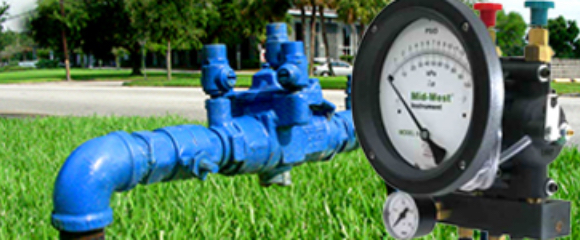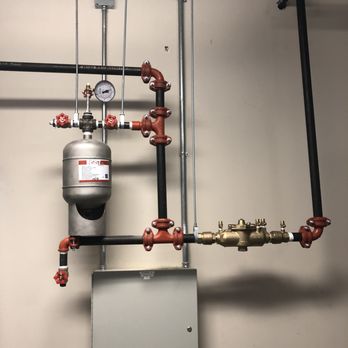Should I Conduct a Backflow Test for My Water?
Should I Conduct a Backflow Test for My Water?
Blog Article
Each person is bound to have their personal theory in relation to Backflow Assembly Testing.

Yes, you require to backflow examination your residence's supply of water to make sure that the water is free of toxic substances and damaging levels of chemicals. Because of the tools called for as well as room for mistake, you ought to not try to do backflow screening by yourself. We recommend that you call a specialist plumber every number of years to evaluate your water.
What is Backflow?
Basically, heartburn is when water moves upwards-- the opposite instructions in the plumbing system. This is additionally referred to as "backpressure." When the water relocates this instructions, it can combine with hazardous contaminants and also position a danger.
What Causes Heartburn?
A regular root cause of heartburn is a loss of water pressure that causes the water to siphon back right into the water. An example is cleaning out a paint container using a hose. You load the paint bucket up with water, leaving the tube in the pail. After a long time, there is a loss in water pressure as well as the tube starts to draw the water back into the water supply. As you can visualize, there are currently chemicals from the paint that are going into the water, potentially posturing a threat. However, many individuals are not even knowledgeable about backflow testing, yet there are several reasons that it's so crucial.
Backflow Testing is Required by Law in Specific Cities
Relying on where you live, you could in fact be needed by legislation to backflow test your law. Iowa City keeps a document of all residential or commercial properties offered by the city's water supply. The city needs that specific "high-hazard" facilities undertake heartburn testing. In many cases, properties such as residences and also apartment are influenced.
You Can Protect Against Backflow
The main purpose of a heartburn tool is to protect against water from moving backward into your water supply. Plumbing technicians set up the tool on the pipelines in your house to make certain that the water only flows in the proper direction.
Backflow Can Influence Both You as well as Your City
Because dangerous backflow can affect the public water supply in addition to a single building, numerous cities establish backflow standards. Contemporary cities have backflow gadgets in location that secure the water supply that comes from a lot of houses and industrial properties. The actual threat comes from watering systems, which can harm the water with hazardous plant foods, manure, as well as other chemicals.
Call a Plumber to Check for Backflow Before It is Too Late
While it may seem grim, polluted water can result in terrible bacterial and also viral infections that are difficult to deal with. A plumbing business can promptly examine your house's water to figure out if there are any kind of hazardous chemical levels. The tiny financial investment is if you can avoid the suffering that originates from consuming polluted water. And also if you do uncover that your water has high levels of contaminants, a plumber can conveniently set up a backflow avoidance device.
Yes, you require to backflow test your home's water supply to ensure that the water is cost-free of toxins and hazardous degrees of chemicals. A common reason of backflow is a loss of water stress that causes the water to siphon back into the water supply. After some time, there is a loss in water stress and also the pipe begins to suck the water back right into the water supply. The major function of a backflow device is to prevent water from streaming backward into your water supply. Many cities develop backflow standards due to the fact that unsafe heartburn can affect the public water supply in addition to a single building.
WHY DOES BACKFLOW TESTING NEED TO BE DONE EVERY YEAR
What Is Backflow?
Toxic gas backing up into a building is one example of potential backflow issues, but backflow can occur in many other ways.
Backflow is generally referred to as the reversal of a liquid or gas in a plumbing system.
Most issues for the public occur with backflow resulting in contaminated drinking water. If you look up backflow issues online you’ll probably find references to “potable” water. That means drinking water.
There have been backflow issues in the past with drinking water. Chemicals, sewage and other contaminants have found their way into drinking water causing health issues for those that count on the fresh water.
What Causes Backflow?
In a residence or commercial building water generally flows one way. This normal flow is usually driven by consistent pressure in the water and waste system.
Anything that changes the normal pressure in the system can lead to backflow.
Fire hydrant use or malfunction can reverse the normal pressure in the system on a city line, but backflow can occur in a number of different ways.
Sometimes backpressure might be caused by someone using a garden hose and submerging the end of the hose in a pool of liquid. If pressure is lost the flow could reverse and contaminants could be released into the drinking water.
Anytime there is a connection between contaminants and the drinking water there is potential for a backflow issue. Sometimes these connections are not immediately obvious like the garden hose connecting to a building’s drinking water supply.
Backflow Regulations
The Environmental Protection Agency (EPA) provides guidelines and regulations for state and local governments regarding backflow. State and local governments also have their own guidelines and regulations for backflow prevention.
Arizona has its own backflow regulations.
Due to issues with backflow in the past, regulations require backflow preventer devices to be used in nearly all residential and commercial buildings.
A backflow preventer is a device that prevents backflow as cross-connection points where potential backflow issues may occur.
While backflow is not a common occurrence, preventers are in place to make sure there is no contamination should something malfunction or go wrong with a building’s water supply.

As a fervent person who reads on Backflow Prevention, I assumed sharing that excerpt was a good idea. Do you know about anybody else who is sincerely interested in the topic? Please feel free to share it. Many thanks for your time invested reading it.
Find Out More
Report this page